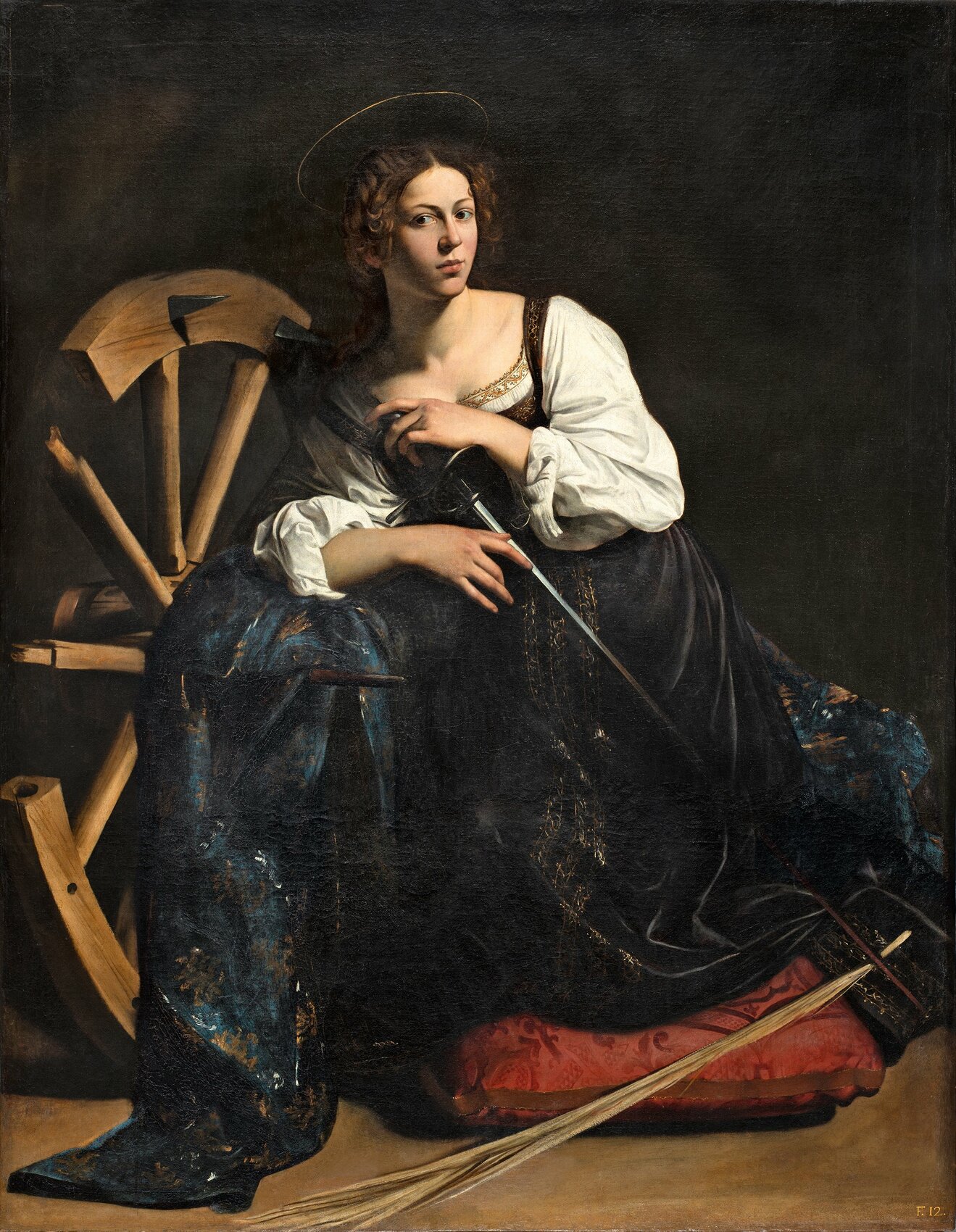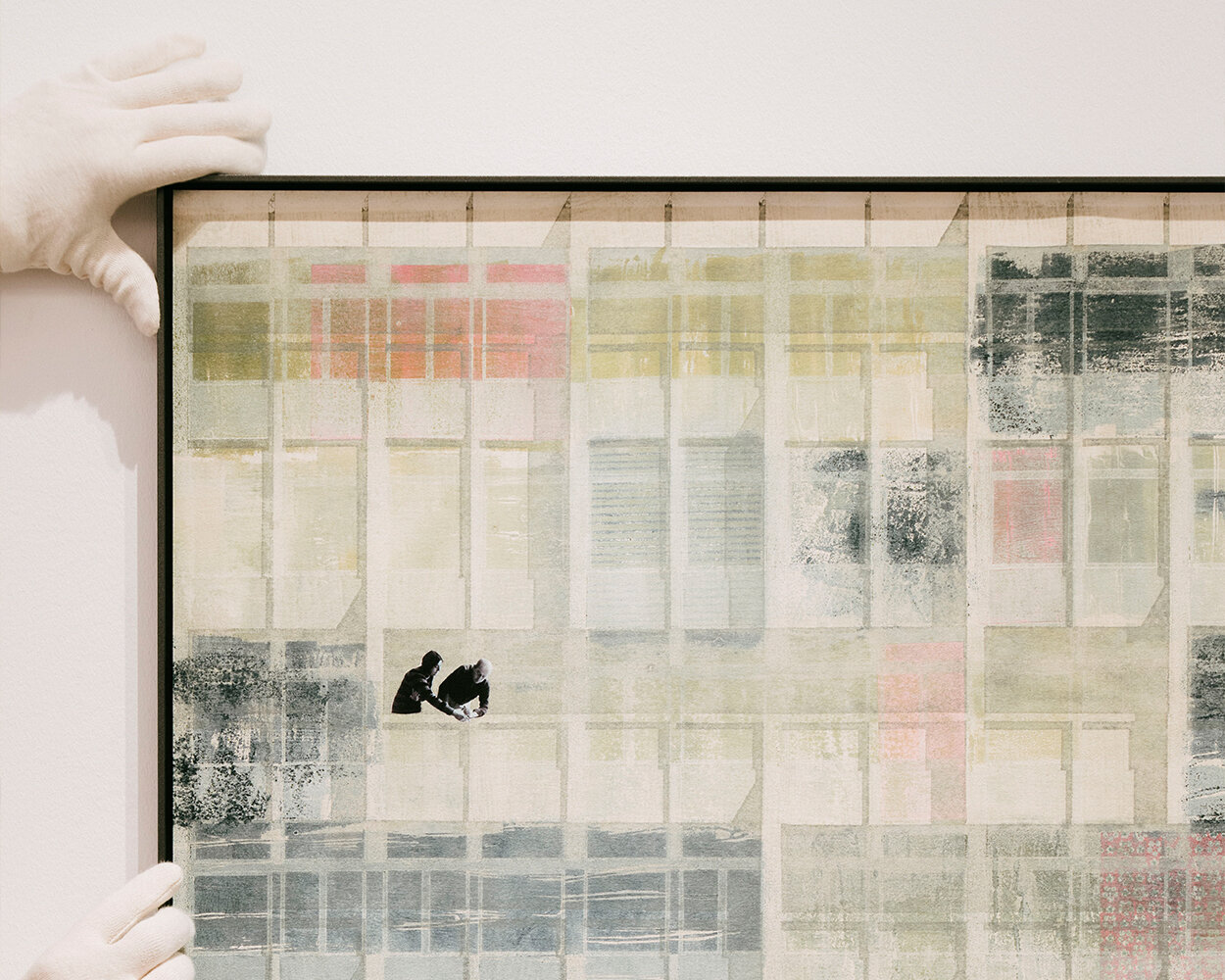Santa Catalina de Alejandría
Santa Catalina de Alejandría
This painting was almost certainly commissioned in Rome by Caravaggio’s first patron, Cardinal Francesco Maria del Monte. Captured in a strikingly natural pose, the figure of St Catherine has been identified as Fillide Melandroni, a celebrated courtesan of the time.
She is surrounded by the attributes of her martyrdom: the breaking-wheel, the sword with which she was beheaded and the martyr’s palm. The dramatic lighting of the scene creates a chiaroscuro effect characteristic of Caravaggio, whose approach to light and volume—evident in this canvas—was to have considerable impact both in Italy and throughout Europe.
The canvas has been dated when Caravaggio’s style was moving towards a use of more compact forms constructed from a powerful chiaroscuro that emphasised the expressivity of his compositions. Saint Catherine, depicted here richly dressed as befitting a princess and kneeling on a costly red damask cushion, seems to be looking directly at the viewer. The colour range used for her garments, which combines blues and violets, is typical of northern Italian painting.
High resolution pigment ink on cotton paper
110 x 143.5 cm
Same size as original
Next unit for sale No. 4
Open edition. Produced on demand
Certificate of authenticity included

 110 cm
143.5 cm
110 cm
143.5 cm
_santacole_thyssen_bornemisza.jpeg)
Caravaggio (Michelangelo Merisi)
Caravaggio, was an Italian painter who worked in Rome, Naples, Malta and Sicily between 1593 and 1610. His painting combines a realistic observation of the human figure, both physically and emotionally, with a dramatic use of light, which exerted a decisive influence on the development of Baroque painting.
Thyssen
The Thyssen-Bornemisza National Museum is a Madrid art gallery exhibiting the works of old and modern masters. It owes its existence to the lease agreement (1988) and the subsequent acquisition by the Spanish Government (1993), of the most valuable core of the private collection built over seven decades by the Thyssen-Bornemisza family.
